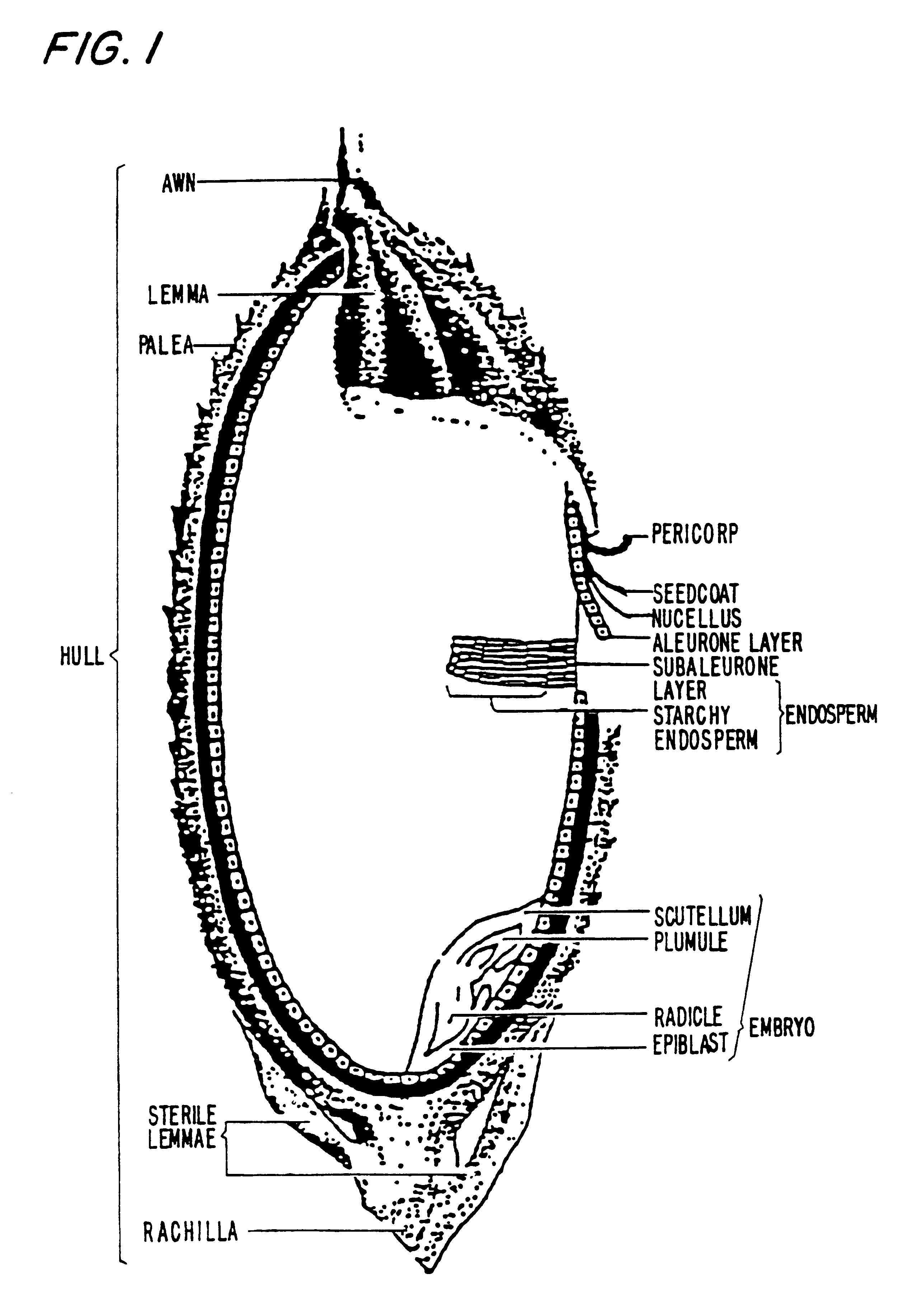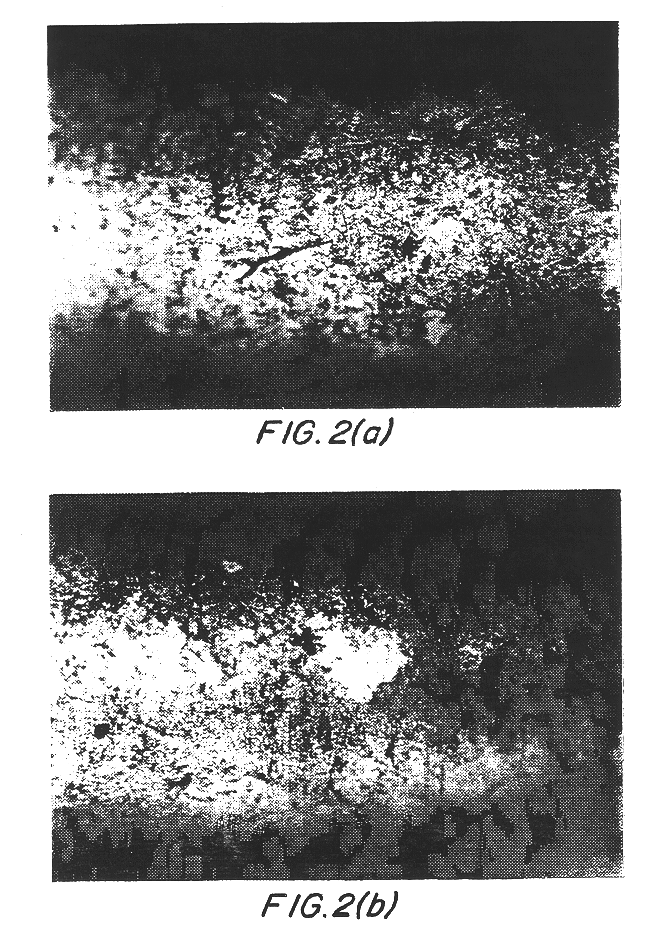Method of making quick cooking and instant rice
a quick cooking and instant technology, applied in the field of quick cooking and instant rice, can solve the problems of product rehydration, difficult and thus longer cooking time, starchy rice, etc., and achieve the effect of reducing the cooking time of rice, reducing the water absorption rate and water absorption valu
- Summary
- Abstract
- Description
- Claims
- Application Information
AI Technical Summary
Benefits of technology
Problems solved by technology
Method used
Image
Examples
example 1
U.S. Variety (Gulfmont) raw brown rice was atmospherically hydrated at a temperature 5.degree. C. below the gel temperature (T.sub.g) for about 2-3 hours. The moisture of the rice reached an equilibrium moisture content of 33% w.b. The rice was thoroughly dewatered. The rice was then steam parboiled at 15-20 psig (121-125.degree. C.) for 2-6 min. The rice had about 32% moisture after steaming.
After parboiling, brown rice lost its birefringence under the polarized light. The rice was then dried by forced air to a range from 20% to 28% moisture. The partially dried rice was milled by passing rice through an abrasive horizontal mill three times (In the conventional milling practice, the rice is dried down to 13-14% moisture before milling.) After milling, the rice is dried to 13-14% moisture.
The Following Methods and Standards were Used for Testing or Evaluating Rice
Bulk Density (kg / m.sup.3)
Dry rice: Gradually pour 200 g of rice into a 1000 mL graduated cylinder. Level the top without ...
example 2
(a) Preparation of Quick-Cooking Rice
Two 500 kilogram samples of rice varieties (Cypress and Thaibonnet) from which the husks, but not the bran, have been removed was fed into a hot steeper bath containing water at 71.degree. C. The residence time of the rice in the water was 4.5 minutes. During transit through the steeper, the moisture of the rice was raised to 25%.
The rice was then transported to a dewatering belt to remove surface water from the rice. The residence time of the rice on the belt was between 30-60 seconds. The rice was fed from the belt directly into a steamer, in which steam at 106.degree. C. and about 0.20 bar overpressure was applied to the rice. The residence time of the rice in the steamer was 30 minutes. During its transit through the steamer, the moisture of the rice was raised to about 28% and its temperature was raised to 106.degree. C.
The steamed rice was then fed into a continuous microwave unit operating at 133 to 136.degree. C. and an overpressure of ab...
first embodiment
In a first embodiment, the rice at approximately 25% moisture was cooled to about 35.degree. C. and then milled as described below.
To provide a comparative example, a portion of the rice was further dried in the conventional grain dryer to 14% moisture, and then cooled to about 35.degree. C. and milled as described further below.
Provided that the drying of the rice was carried out in a conventional grain dryer, the resulting dried milled rice has a smooth and glossy appearance characteristic of milled parboiled rice. Similar appearances are achieved for the samples milled at 14% and 24% moisture.
(b) Preparation of Instant Rice
A brown rice is parboiled and milled as described above with moisture contents of 19% and 24% moisture. The milled, wet rice is then instantized by hot air drying for 10 seconds-7 minutes at 120-270.degree. C. A typical example is a treatment of wet milled rice at 24% moisture at 174.degree. C. for 2.5 minutes. The drying conditions will result in a reduced bul...
PUM
 Login to View More
Login to View More Abstract
Description
Claims
Application Information
 Login to View More
Login to View More - R&D
- Intellectual Property
- Life Sciences
- Materials
- Tech Scout
- Unparalleled Data Quality
- Higher Quality Content
- 60% Fewer Hallucinations
Browse by: Latest US Patents, China's latest patents, Technical Efficacy Thesaurus, Application Domain, Technology Topic, Popular Technical Reports.
© 2025 PatSnap. All rights reserved.Legal|Privacy policy|Modern Slavery Act Transparency Statement|Sitemap|About US| Contact US: help@patsnap.com



